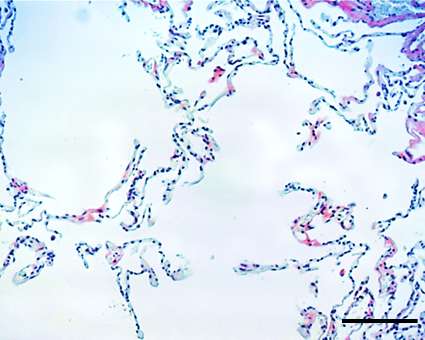Researchers Offer Insights Into Proteins’ Mechanism of Action in Inhibition/Acceleration of Fibrosis

In a recent paper published in the Proceedings of the National Academy of Sciences of USA entitled “DC-SIGN activation mediates the differential effects of SAP and CRP on the innate immune system and inhibits fibrosis in mice,” scientists from Texas A&M University reported insights into the understanding of the mechanisms behind scarring and wound healing processes that may benefit patients with fibrotic diseases such as pulmonary fibrosis.
Fibrosis is a disease characterized by accumulation of excess fibrous material in an organ or tissue due to a reactive and reparative process that leads to changes in architecture and function of these vital organs or tissues. The most common affected organs by fibrosis are the liver, skin, and lungs, as seen in pulmonary fibrosis. Symptoms of fibrosis depend on the affected body part. For example, while patients with liver fibrosis might experience weakness, swelling in the lower legs, and yellowish skin, different symptoms like shortness of breath, dry coughing, chest pain, and weight loss appear in patients with pulmonary fibrosis. Researchers estimate that some form of fibrosis-related diseases causes an average of 45 percent of disease-related deaths per year in the US.
From the mechanism viewpoint, fibrosis is similar to the process of scarring in response to injury to the extent to become destructive. It has been reported that two human serum proteins named serum amyloid P (SAP) and C-reactive protein (CRP) strongly affect the innate immune system involved in the process of fibrosis. Previous studies carried out on multiple animal models and Phase 1 and Phase 2 clinical trials illustrated that SAP reduces fibrosis, whereas CRP appears to boost it. However, the reasons of why these proteins have opposing effects are still unknown. In the recent paper published in Proceedings of the National Academy of Sciences of USA, the researchers discovered that the difference lies in the mechanism of which the SAP protein appears to bind to a receptor known as DC-SIGN, while the other CRP protein don’t. This in turn affects the innate immune system differently. The data suggest that SAP activates the receptor DC-SIGN that regulates the innate immune system in a different way from that of CRP.
In conclusion, this discovery identifies SAP as a protein which inhibits scar-tissue formation. The identification of DC-SIGN as a SAP receptor sheds new lights into the mechanism of scarring processes. As a result, if an anti–DC-SIGN antibody is designed as a new therapeutic, it could possibly lead to a novel approach to treat fibrosis in the future.






